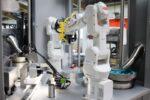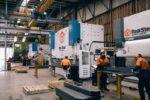EMA & Industry 4.0: Company Profile -RML
RML has been providing high-performance innovative robotic and automation solutions to their customers for the past 40 years. From robotic automation systems, cartoning, case packing, conveyor solutions, custom assembly, palletising, lidders, closers and components. RML has worked with large and small production lines throughout New Zealand and Australia. Problem or Opportunity As a machine builder, RML have identified key issues which were stopping their customers from maximising the value of their investments. Primarily, it was difficult to be connected to machines from outside of the customers’ plant. This led to site visits being required to provide customer support and delivering upgrades that increased customers productivity. The lack of network connectivity also meant that machines were generally standalone, with limited integration with the customers business systems, thus not delivering the performance data to the teams that are. The Solution RML identified that current PLC technology is great for controlling plant, but is lacking in the ability to fully control machines and harness the full potential of Industry 4.0. To make their products Industry 4.0 ready, RML moved to using Industrial Controllers (IC’s) about six years ago. IC’s are similar to a Windows computer. They have the ability to run real-time control and allow a suite of additional programs to be installed, beyond simple machine controls. This has also helped them bridge the common access or security issues which machine builders face with PLCs. Using IC’s, it is now easier to support customers in real-time while ensuring security needs are met. The IC’s allow for the remote adjustment of settings to help when troubleshooting, allowing remote support and troubleshooting, and allowing RML to train new operators online. This ensures machines are back up and running quickly, effectively maximising production. Also of benefit is the ability to collect real-time data using the PLC […]









